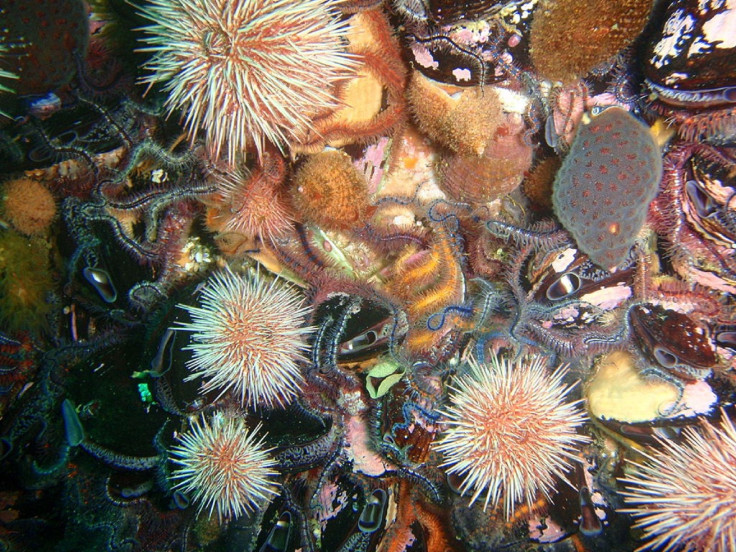Color-Changing Sea Star Relative Can 'See' Without Eyes
KEY POINTS
- Red brittle stars have the ability to change colors between day and night
- For the first time, scientists show how red brittle stars "see" without eyes
- Researchers found that their color-changing ability plays an important role in their "vision"
- They are only the second species known to exhibit extraocular vision
Sea stars and sea urchins have cousins that don’t have eyes but are still able to see. Called brittle stars, they first got the scientific community’s attention 30 years ago because they tend to make dramatic color changes between day and night, and also because they have a particular aversion to light.
Only recently, researchers also discovered that the red brittle stars Ophiocoma wendtii (O. wendtii) are actually covered in light-sensitive cells called photoreceptors, but they were unable to find what they were for.
In a new study, an international team of researchers found that the creatures’ signature color-change actually plays a significant role in how they get to “see” even without eyes.
Brittle Star ‘Eyesight’
For the study, the researchers conducted experiments to test red brittle stars’ “eyesight.” For the first set of experiments, the red brittle stars were placed at the center of circular arenas then presented with three different stimulus patterns.
These experiments revealed that O. wendtii actually seeks out contrasts that mimic structures they could hide in. However, the researchers also found that the behavior disappeared at night even if the photoreceptors still appear to be active.
To understand why, the researchers conducted another experiment, this time with a related species, Ophiocoma pumila (O. pumila), which is also covered by light-sensing cells but retains its color regardless of the time of day unlike the O. wendtii that changes from reddish-brown during the day to beige at night.
The O. pumila failed the vision test.
Seeing Without Eyes
By reconstructing digital models of the photoreceptors in both species, the researchers discovered that the pigmentation that allows the O. wendtii to change its color allows the light to reach the photoreceptors only at a narrow angle, corresponding to its perceived “vision.” When the pigmentation is inactive, which is always in the O. pumila but only at night in the O. wendtii, light can reach the photoreceptors at a wider angle, thereby making “vision” impossible.
In other words, during the daytime when the O. wendtii’s photoreceptors are surrounded by the chromatophores that cause their dramatic color change, each photoreceptor essentially screens the light and acts much like a pixel in an image. Together, the photoreceptors form a “vision” of its surroundings. This is why the O. wendtii gets to “see” in the daytime but not at night, and why the O. pumila cannot at all.
This makes the O. wendtii only the second creature to exhibit extraocular vision, or the ability to see without eyes. It joins the lonely list consisting so far only of a single sea urchin species.
“It's a very exciting discovery. It had been suggested 30 years ago that changing color might hold the key to light-sensitivity in Ophiocoma, so we're very happy to be able to fill in some of the gaps that remained and describe this new mechanism,” Lauren Sumner-Rooney of Oxford University Museum of Natural History said.
The study is published in the journal Current Biology.

© Copyright IBTimes 2025. All rights reserved.






















